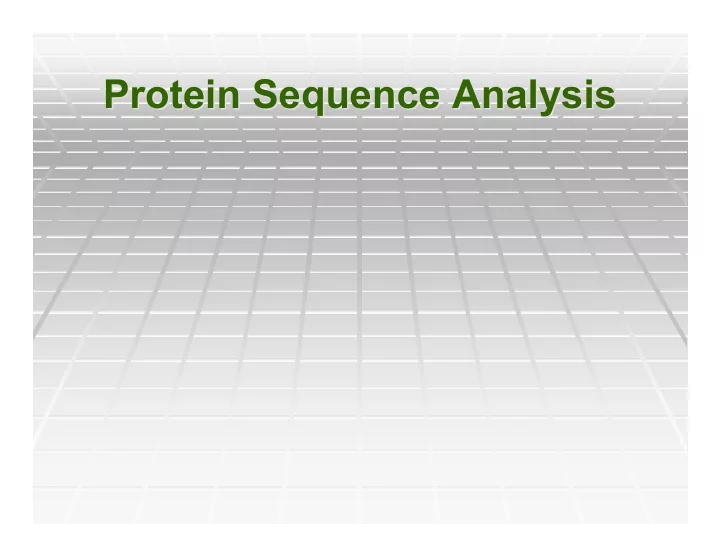

Protein Sequence Analysis Protein Sequence Analysis
Domain review Domain review ß What is a domain? ß What is a domain? ß Part of a sequence that can fold independently, and is Part of a sequence that can fold independently, and is ß present in other sequences as well present in other sequences as well
Domain Search Domain Search ß Motifs (Regular expression & others) ß Motifs (Regular expression & others) ß Profiles ß Profiles ß Profile ß Profile HMMs HMMs
PROSITE (Motif/Profiles) PROSITE (Motif/Profiles)
http://pfam.wustl.edu/ http://pfam.wustl.edu/ Also at Sanger Also at Sanger
http://hmmer.wustl.edu
HMMER programs ß Hmmalign ß Hmmalign ß Align a sequence to an HMM Align a sequence to an HMM ß ß Hmmbuild ß Hmmbuild ß Build a model from a multiple alignment Build a model from a multiple alignment ß ß Hmmemit ß Hmmemit ß Emits a probabilistic sequence from an HMM Emits a probabilistic sequence from an HMM ß ß Hmmpfam ß Hmmpfam ß Search PFAM with a sequence query Search PFAM with a sequence query ß ß Hmmsearch ß Hmmsearch ß Search a sequence database with an HMM query Search a sequence database with an HMM query ß
Post-translational modification Post-translational modification ß Residues undergo modification, usually by ß Residues undergo modification, usually by addition of a chemical group. addition of a chemical group. ß Key mechanism for signal transduction, ß Key mechanism for signal transduction, and many other cellular functions and many other cellular functions ß Some modifications might require single ß Some modifications might require single residues (Ex: phosphorylation phosphorylation). Others ). Others residues (Ex: might require a pattern might require a pattern
Protein targeting Protein targeting
Protein targeting Protein targeting ß In 1970, Gunter ß In 1970, Gunter Blobel Blobel showed that showed that proteins have an N-terminal signal proteins have an N-terminal signal sequence which directs proteins to the sequence which directs proteins to the membrane. membrane. ß Proteins have to be transported to other ß Proteins have to be transported to other organelles: nucleus, mitochondria,… … organelles: nucleus, mitochondria, ß Can we computationally identify the ß Can we computationally identify the ‘ ‘signal signal’ ’ which distinguishes the cellular which distinguishes the cellular compartment? compartment?
ß For ß For transmembrane transmembrane proteins, can we proteins, can we predict the predict the transmembrane, , transmembrane outer, and inner outer, and inner regions? regions?
Multiple alignment tools Multiple alignment tools
Tools for secondary structure prediction • Each residue must be given a state: Helix, Loop, Strand • HMMs/Neural networks are used to predict
Next topic: Gene finding
Recommend
More recommend